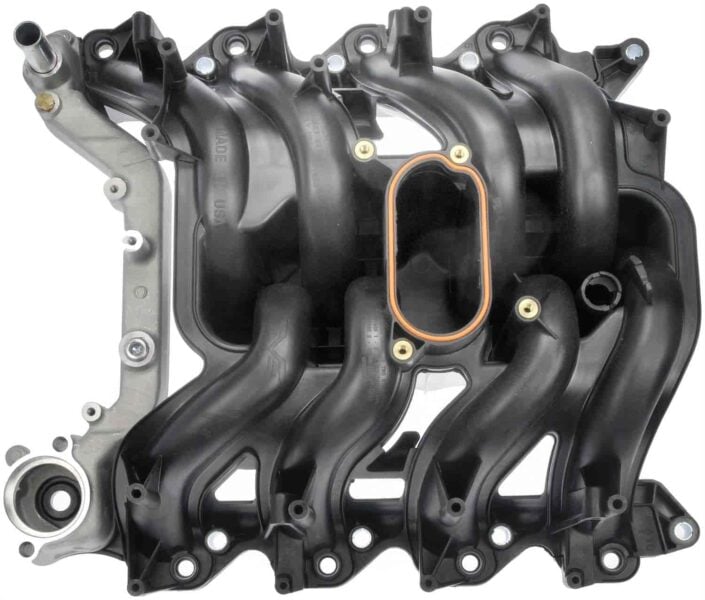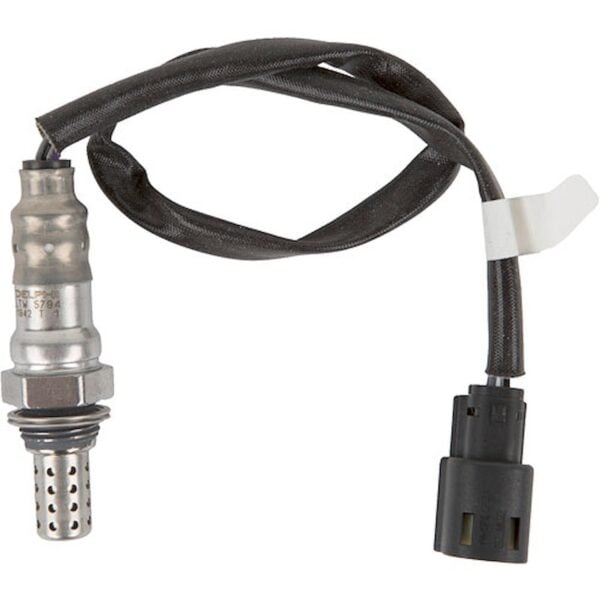Sign up now to join the JEGS email newsletter and be the first to learn about new products, special deals and e-mail only offers!

For your vehicle's engine to run efficiently, it must have the right fuel pressure regulator. This auto part helps maintain steady fuel pressure to the engine so you can enjoy optimal performance and fuel economy.
There are many reasons you might need to replace a fuel pressure regulator, such as to compensate for performance upgrades or if the part fails from regular wear and tear.
When shopping for a replacement fuel pressure regulator, you must select the right type or else your engine won’t receive enough fuel, impacting performance, fuel economy, and more.
Thankfully, this guide covers everything you need to know to choose the best fuel pressure regulator for your vehicle, whether you're rocking a classic carburetor setup or a modern Electronic Fuel Injection (EFI) system.
Let’s get started.
Fuel pressure regulators are designed to consistently maintain the right amount of fuel delivery to the engine. This part ensures that the engine gets the ideal fuel pressure needed for efficient performance, no matter the driving conditions.
Fuel pressure regulators are particularly beneficial for high-performance engines, which require a perfect balance of fuel pressure to deliver peak power and efficiency. Choosing the wrong regulator or ignoring a defective one can result in decreased performance, higher fuel consumption, and fuel leaks.
But not just any regulator will do; you must first know what type of fuel system your vehicle has, a topic we’ll cover next.
Understanding your fuel system is the first step in choosing the right fuel pressure regulator. Your vehicle will either have a carburetor or an EFI system, both designed to mix air and fuel for an internal combustion engine, but they do so in different ways.
Carburetors are mechanical devices that combine air and fuel in the right proportion before it enters the engine's cylinders. They typically operate at lower fuel pressures, around 4 to 7 psi. Carburetors are often found in older or classic vehicles and can be identified by a distinct, usually round air filter housing mounted on top of the engine.
As the air flows through the carburetor, it passes over a narrow part where a vacuum is created. This vacuum pulls fuel into the airstream, mixing with the air before being drawn into the engine for combustion.
EFI systems, which come in various types, deliver fuel more accurately. Multi-Port Fuel Injection (MPFI) systems inject fuel into the intake ports near the intake valves, while direct injection delivers fuel right into the combustion chamber.
These systems generally run at higher fuel pressures, typically between 30 and 60 psi (40 to 70 psi for boosted applications), and are found in most modern vehicles. EFI systems can often be identified by a fuel injector for each cylinder located near the engine's intake manifold.
This precision in fuel delivery makes EFI systems generally more efficient than carburetors.
Carbureted systems don't have regulators like high-pressure EFI systems. Instead, they require a low-pressure fuel pump (usually operating at 4-7 psi) or an external regulator to reduce pressure to the appropriate range if a higher-pressure mechanical or electric fuel pump is used.
High-performance engines, whether carbureted or EFI-based, typically require fuel pressure regulators to manage the increased fuel volume and pressure.
Now that you have a better understanding of the different fuel system types, let’s review your options for fuel pressure regulators and explore how each works. There are two main types: return style (or bypass) and deadhead (also known as blocking regulators).
Return-style regulators work by stabilizing fuel pressure and directing surplus fuel back to the tank. When fuel flows through the regulator, it causes an increase in pressure. This triggers a spring-loaded bypass valve to open, allowing the excess fuel to return to the tank, thereby maintaining steady fuel pressure.
These regulators are adjustable, which means you can fine-tune the fuel pressure to match your engine's requirements. They're especially useful in EFI systems and setups with carburetors used in conjunction with high-pressure fuel pumps.
For high-demand scenarios like turbocharged or supercharged engines, return-style regulators are invaluable as they ensure a more consistent fuel pressure, allowing for optimal engine performance.
As for deadhead regulators, these don't have a return line. They regulate fuel pressure by restricting the fuel flow once it hits a predetermined level. When the pressure reaches this set point, a spring-loaded valve closes, reducing both the flow of fuel and its pressure.
Deadhead regulators are simpler in design compared to return-style. Despite being simpler, they can cause fuel temperatures to rise due to the restriction they create in the fuel flow. This restriction can result in increased fuel pressure on the upstream side of the regulator, leading to a rise in fuel temperature.
Modern EFI systems often incorporate design features like fuel line insulation and specialized tank designs to address this, making them a practical choice in certain contexts.
These regulators are a good fit for less demanding applications, such as classic cars with carbureted engines used for regular driving, where fuel demands are consistent and fuel temperature is less of a concern.
Learn more about how fuel pressure regulators work in our detailed guide.
Sign up now to join the JEGS email newsletter and be the first to learn about new products, special deals and e-mail only offers!

There are several advantages of return-style bypass regulators, making them a popular choice for many installations:
The main consideration when using return-style regulators is their complexity. They require a return line that leads back to the fuel tank, complicating the installation process. This factor is important to consider, especially for those who are planning to install the regulator themselves or in custom setups.
The routing of your fuel pressure regulator depends on several factors, including the type of regulator, the fuel system, and the power output.
In EFI systems, return-style regulators are typically installed after the fuel rails to maintain consistent pressure at the injectors. In carbureted systems, the placement can vary based on specific setup requirements, but is usually inside the engine compartment between the fuel filter and carburetor. Always follow the manufacturer's instructions for the best results.
For boosted applications, placing the regulator after the fuel rails can allow for a quicker response to pressure changes, enhancing performance, especially under varying load conditions.
For deadhead regulators, installation is usually straightforward. You simply install them between the fuel pump and the carburetor, offering a practical solution for simpler or traditional setups.
You may also want to consider using a fuel pressure gauge, which isn’t necessary for standard applications but is a must anytime an adjustable fuel pressure regulator is installed. It allows for detailed monitoring and fine-tuning of fuel pressure, which is key for achieving optimal engine performance and troubleshooting fuel system issues.
A gauge ensures that you have accurate, real-time data on your fuel system, a significant advantage in both maintaining and enhancing your vehicle's performance.
With your newfound knowledge, you should now be fully prepared to choose the right fuel pressure regulator for your vehicle, be it for a carburetor setup or an EFI. For a massive selection of quality regulators, consider JEGS, a trusted supplier of performance auto parts.
Complete your order online and have your products sent straight to your door. Still have questions? Contact our team today.



